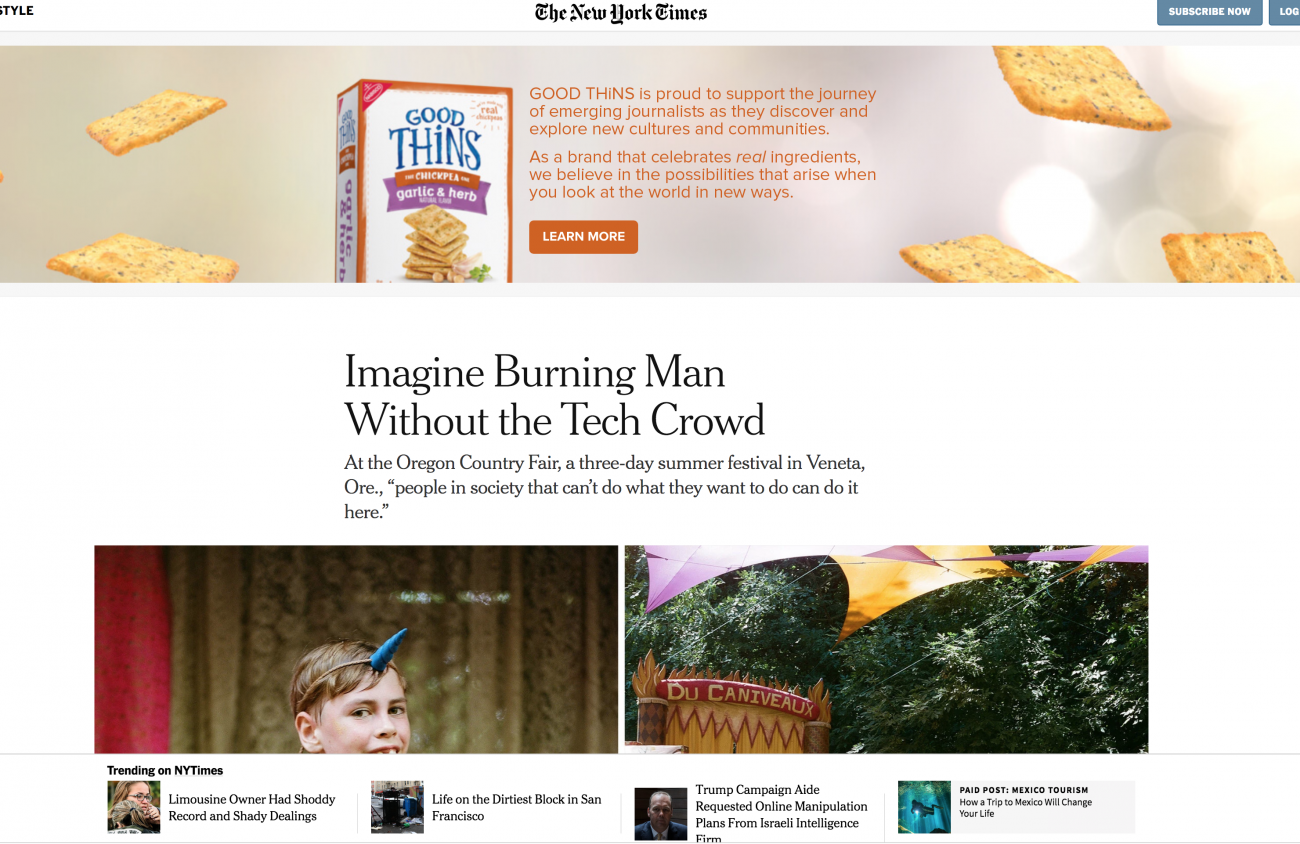If you attended the Oregon County Fair this past summer, there’s a chance you were in the vicinity of The New York Times reporter Lauren Angalis Field.
On Oct. 6, the Times published Field’s review and photo spread on the annual event in Veneta.
Field describes OCF as “Burning Man without the tech crowd.” But at the rate the local tech scene is expanding, that might not last for long.
Field’s pictures capture crowds, a young child in a sequined unicorn outfit, and the usual quota of tie-dyed shirts and (rapidly-graying) beards and braids.
Otherwise, all the usual OCF hot-takes are present and accounted for. Fields goes over the fair’s history. “Fair draws on the eccentric aesthetics and ideology of the 60s and 70s,” Field writes.
“As the festival expands,” she then notes perceptively, the “fair community must reconcile it’s [sic] countercultural identity with the increasing commodification of hippie ethos and critiques of cultural appropriation.”
“There was no end in sight of white people donning and selling the attire of minorities,” she goes on, “some wearing dreads, others selling saris or moccasins. Little mention is made to the Kalapuya peoples, who formerly lived on this land and who still live in the greater Eugene area.”
“Brown felt disillusioned with the festival’s financial inaccessibility,” Field writes of chatting up a couple “fair kids.”
“’I saved up $100 to come here, but I couldn’t really buy anything,’” she said.
“’Growing up has exposed a lot of aspects of fairgoers I may not have seen,’” another fair kid of color tells Field, adding: “’The hippie movement was not forefronted by people of color.’”
While at the fair, Field caught some music as well as lectures on sexual consent. She also got scolded for not composting her trash.
The story mentions Ken Kesey and the Grateful Dead as well as little changes like surveillance cameras, which Field calls unnerving.
She also discloses what every Eugenean, fair-goer or not, already knows: The fair is best experienced after dark, though she mistakenly says only “staff” are there after closing.
Vendors peddling healing crystals, hemp yoga pants and bottles of rejuvenating face spray labeled swamp water were “late-capitalist” and a “distraction,” in the words of Field. She attended the fair as a teenager in Portland, so it’s not her first time. “Part of the experience is getting lost,” she writes.
But Field is also tender with what makes OCF beloved for so many. Ten-year-old Gabrien Warren tells Field, “I love the community here and how people in society that can’t do what they want to do…can do it here.”
Is the Oregon Country Fair still Eugene’s best foot forward on the national stage?
It has been for a very long time. Maybe too long. Field gives us an outsider’s view of the venerable fest and seems to question whether the OCF has become too economically extractive.
OCF isn’t going anywhere, nor should it. To love Eugene is to love, or love to hate, that dusty old hippie throw-down just west of town.
Eugene, however, has diversified beyond OCF, and it’s somewhat a shame the Times didn’t take the time to notice. Next time they send a reporter to town, let’s tell them.
